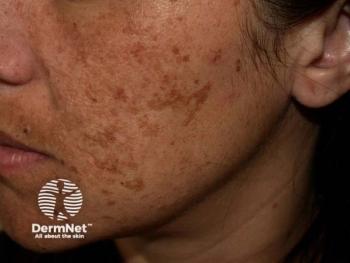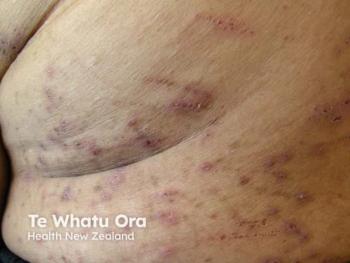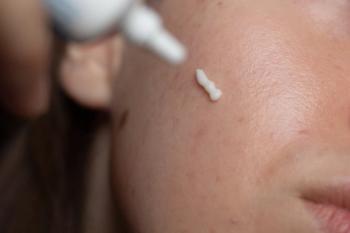
Novel PDE4 Inhibitor ME3183 Shows Efficacy for Plaque Psoriasis in Phase 2 Trial
Key Takeaways
- ME3183 showed significant efficacy in reducing PASI scores, especially at 7.5 mg twice daily, compared to placebo.
- The trial demonstrated a favorable safety profile, with common adverse effects being mild to moderate, including diarrhea, nausea, and headache.
Discover the promising results of ME3183, a novel oral treatment for plaque psoriasis, showing significant efficacy and safety in a recent study.
ME3183, a novel oral phosphodiesterase 4 (PDE4) inhibitor, has been evaluated in a phase 2 trial of patients with moderate to severe plaque psoriasis.1 The drug, particularly the dosages of 7.5 mg twice a day and 15 mg once a day, saw rapid and sustained effects after 16 weeks with an acceptable safety profile. With 4 million cases of psoriasis globally, there is an unmet need for additional oral psoriasis medications with both strong efficacy and safety, according to the study authors.2
The randomized, double-blind, placebo-controlled, parallel-group study ran from March 28, 2022, to May 31, 2022, at 27 study sites in the US and Canada. This included a 4-week screening period, a 16-week treatment period, and a 4-week follow-up. A total of 132 male and female patients between the ages of 18 and 75 years, with a mean age between 45.3 and 47.3. Each participant had psoriatic plaques covering ≥10% of their body surface area, along with a PASI score between 12 and 40 and a static Physician's Global Assessment (sPGA) of ≥3.
Patients were randomly assigned to receive either ME3183 5mg twice a day (n = 26), 10 mg once a day (n = 26), 7.5 mg twice a day (n = 26), 15 mg once a day (n = 27), or placebo (n = 27). The primary endpoint was a ≥75% reduction in baseline PASI scores at week 16. Investigators also tracked the proportion of patients who reached PASI50, PASI90, and PASI100, along with those who achieved a sPGA score of clear or almost clear (0 or 1). The Dermatology Life Quality Index (DLQI) score and itch numerical rating scale (NRS) were also utilized.
Over 61% of patients in the 7.5 mg cohort reached the primary endpoint, which was statistically significant versus placebo. This group also had the highest mean percentage change from baseline PASI (-85.8%). Comparatively, 58.3% of patients in the 5 mg group, 32% in the 10 mg group, and 52% in the 15 mg group achieved ≥75% reduction in PASI. Just 14.8% of those taking placebo reached the same goal.
Between 52 to 75% of participants who were treated with ME3183 reached PASI50. The 7.5 mg group also had the highest proportion of PASI90 scores (53.8%) compared to 20 to 28% in the other ME3183 groups and 7.4% in the placebo group. None of those in the placebo cohort reached PASI100. However, 4.2%, 20.0%, 26.9% and 16.0% in the ME3183 5 mg, 10 mg, 7.5 mg, and 15 mg groups, respectively, achieved this.
Over 28% of those taking ME3183 experienced a 2-point reduction on the sPGA scale, with many achieving a score of 0 or 1. DLQI scores reduced by a significant amount in all of the ME3183 groups (58.8% to 93.3%). Itch NRS changed by -4.7 in the 5 mg cohort, -3.9 in the 10 mg cohort, and -5.3 in both the 7.5 and 15 mg cohorts. These positive changes were not observed in the placebo group.
Regarding safety, the most common adverse effects in those who were treated with ME3183 included diarrhea (16.0%–38.5%), nausea (7.7%–30.8%), and headache (7.7%–42.3%). The 7.5 mg and 15 mg ME3183 groups saw the highest proportion of adverse events. Most of these were mild to moderate in nature. However, 13 patients discontinued the drug due to these events. The highest incidence of this was in the 7.5 mg cohort (5 patients [19.2%]).
These findings build on positive results from an initial phase 1 study in healthy adults.3 Larger trials with more diverse patient populations can continue to explore the potential of ME3183 and thus, find an optimal dose for plaque psoriasis.
References
1.Papp KA, Armstrong AW, Koresawa T, Otake K, Hirata M, Kano A. Efficacy and safety of ME3183, an oral phosphodiesterase 4 inhibitor, in patients with plaque psoriasis. J Eur Acad Dermatol Venereol. Published online July 25, 2025. doi:10.1111/jdv.20863
2. Damiani G, Bragazzi NL, KarimkhaniAksut C, et al. The Global, Regional, and National Burden of Psoriasis: Results and Insights From the Global Burden of Disease 2019 Study. Front Med (Lausanne). 2021;8:743180. Published 2021 Dec 16. doi:10.3389/fmed.2021.743180
3. Kato S, Cho N, Koresawa T, Otake K, Kano A. Safety, Tolerability, and Pharmacokinetics of a Novel Oral Phosphodiesterase 4 Inhibitor, ME3183: First-in-Human Phase 1 Study. Clin Pharmacol Drug Dev. 2024;13(4):341-348. doi:10.1002/cpdd.1351
Newsletter
Like what you’re reading? Subscribe to Dermatology Times for weekly updates on therapies, innovations, and real-world practice tips.


















